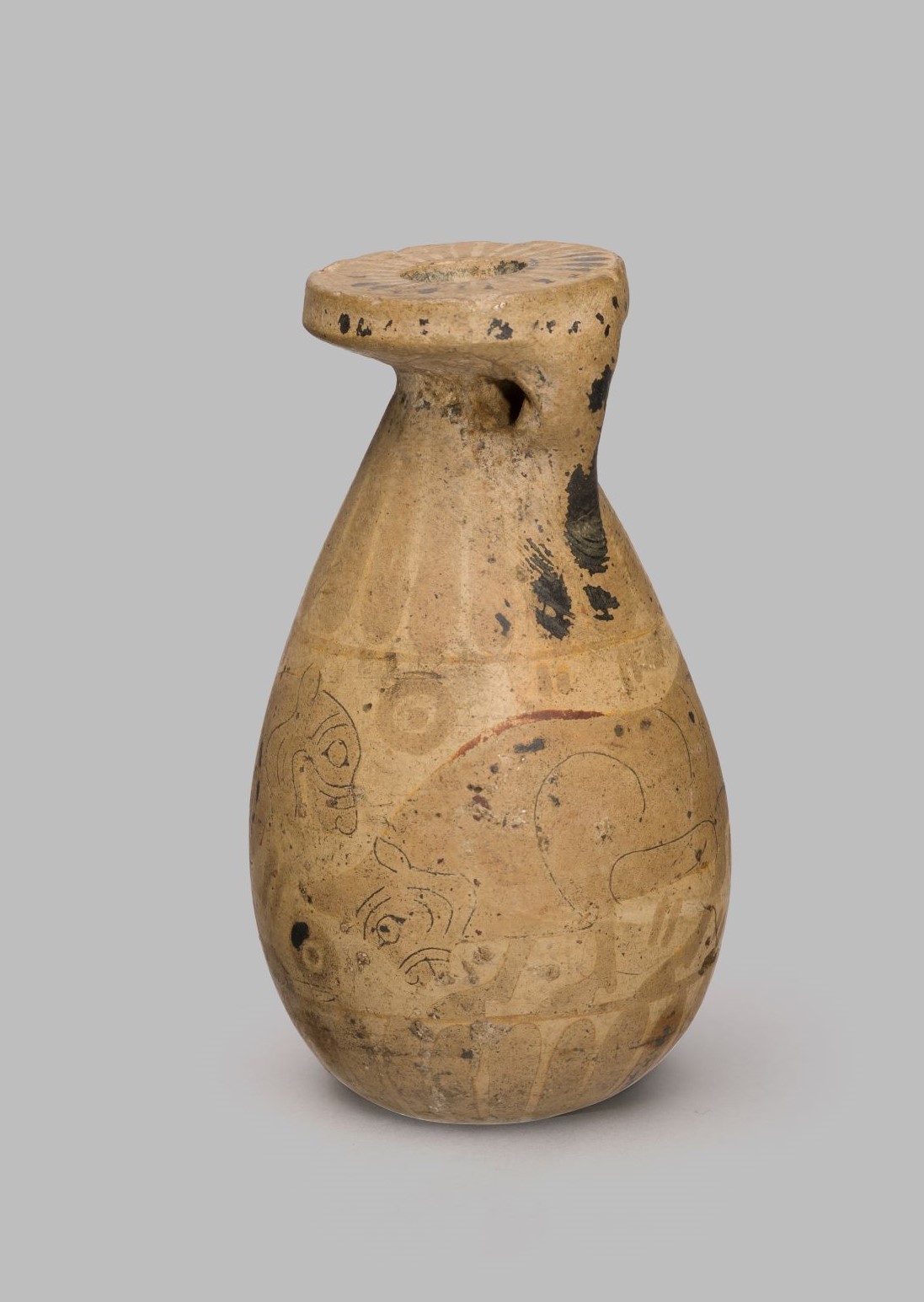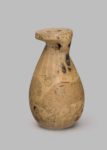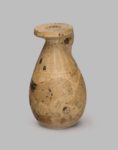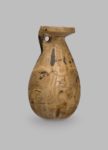
Alabastron [Gr41]
Transitional Corinthian, by the Ardea Painter, 640-625 BC
Painted terracotta (h. 6.9 cm, d. 4.1 cm)
On the body, a lion facing a bull, their tails interlocking behind.
This perfume flask is a typical example of 7th-century Corinthian pottery, which was made in large quantities and exported across the Mediterranean. The style of Corinthian painting at this time is known as ‘orientalising’ because it was strongly influenced by the art of Asia Minor and the Assyrian Empire. The most important innovation was the use of dark painted silhouettes, into which detail was incised with sharp point. This technique was probably inspired by the engraved decoration of metalwork imported from the East. Although the paint of this vase has faded, the incised features of the lion and bull still stand out clearly.
Corinthian painters of the 7th century took many of their decorative motifs from Near Eastern art. Animals featured prominently and exotic creatures like lions were especially popular. The lion had become extinct in most of mainland Greece by 1,000 BC, but nonetheless features prominently in similes in Homer’s Iliad (c. 700 BC). The image of the lion and the bull recurs frequently in ancient art and a wide range of symbolic interpretations have been put forward to explain it.
A vase almost identical to this one was excavated at Ardea, near Rome, during the digging of an Allied gun position in June 1944. Two other closely related examples were excavated at Despotiko in the Cyclades in 2001. The painter seems also to have specialised in scenes of bulls fighting. A similar example is in the Paros Museum and another was sold at Christie’s in 2004.
Literature: J. Falconer and T. Mannack, Corpus Vasorum Antiquorum: Great Britain, Fascicule 19: Winchester College (Oxford, 2002), p. 14, plate 10. 13-15; C.W. Neeft, Addenda et Corrigenda to D.A. Amyx, Corinthian Vase-Painting in the Archaic Period (Amsterdam, 1991), p.21; A. Amyx, Corinthian vase-painting of the Archaic Period (Berkeley, 1988), 52.3; R.M. Cook and C.B.R. Butchart, ‘Some Bucchero Vases from Ardea’, Papers of the British School at Rome, vol. 17 (1949), p. 4; H.A. Payne, Necrocorinthia, a study of Corinthian art in the Archaic period (Oxford, 1931), p. 274, no. 70, plate 16.1; possibly Winchester College Memorial Buildings: Department of Classical Art (Winchester, 1909), p. 13 (no. 9)
Provenance: From Argos, at Winchester College by 1909
Location: Treasury, Gallery 3


